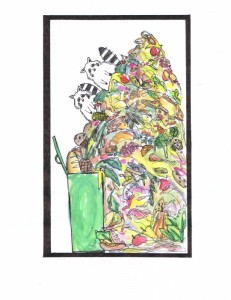Kudos to the Camosun Students for Environmental Awareness and Camosun College for installing compost bins at Lansdowne campus at the beginning of this term. Navigating college bureaucracy can be a lengthy and frustrating process, and it’s commendable that both sides stuck with it.
1.3 billion tons of food is wasted every year, according to the UN Food and Agriculture Organization. That’s about 30 percent of all the food produced in the world. The vast majority of this food waste goes straight to the landfill, where it creates the greenhouse gas methane, which is 20 times more effective at trapping heat within our atmosphere than carbon dioxide.
Not only does the consumer waste money on uneaten food, but the environment loses out as well.

We can reduce the amount of food we waste in many ways, such as checking expiration dates more carefully, buying only as much food as we need, and eating that bruised apple we dropped on the floor. We can also divert food waste from the landfill into compost bins.
About 35 percent of household garbage is made up of compostable food waste. This waste can be turned into compost that can then be used as manure. Compost also reduces greenhouse gas emissions and reduces landfill waste.
Following in the footsteps of Vancouver’s pilot project in 2011, the City of Victoria has created a new kitchen scraps and garbage program that will require citizens to separate their waste into three bins: garbage, recycling, and kitchen scraps. They believe this program will reduce landfill waste by 30 percent, as well as reduce Victoria’s carbon footprint. The new program will be implemented in January of 2013.
Throwing a banana peel or the remnants of lunch into the garbage is easy, but we don’t realize what a negative impact such a small gesture has on our environment.
That is why compost programs like the one at Camosun are so important: students simply have to toss their scraps into a different bin to positively affect the school’s and their own environmental impact.
